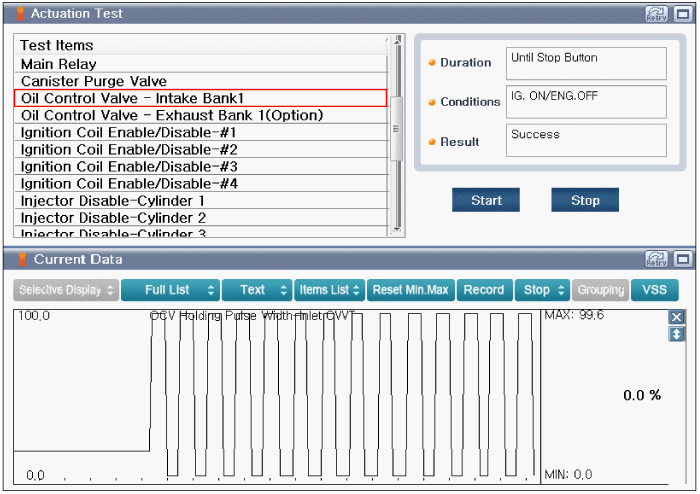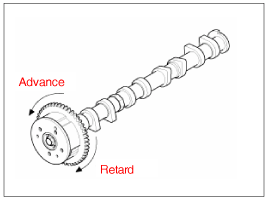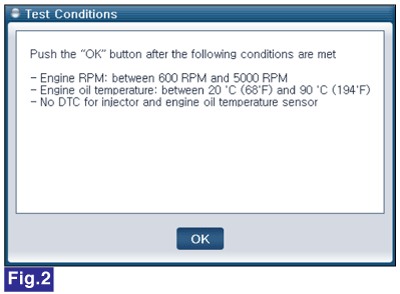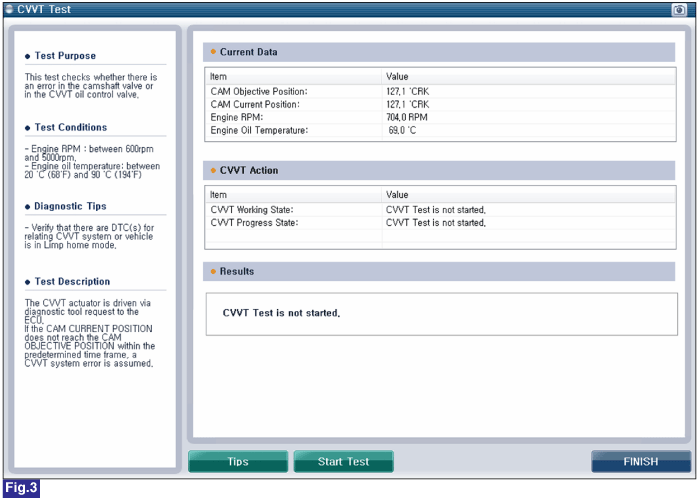Is measured value within specification?
 | ▶ Go to next procedure. |
 | ▶ Carefully re-do this troubleshooting guide steps. ▶ If problem still occurs, replace Intake OCV and then go to "Verification of Vehicle Repair" procedure. |
Install the component with the specified torques.
Note that internal damage may occur when the component is dropped or mis- treated.
Apply engine oil to the valve O-ring before re-installing.







